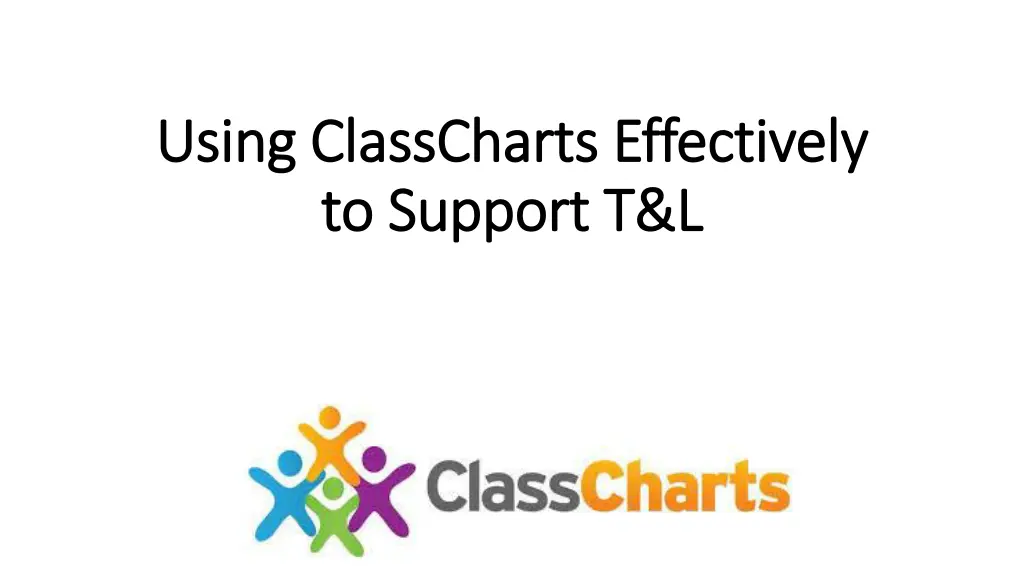
Using ClassCharts for Effective Teaching and Learning Support
Explore the benefits of using ClassCharts to create personalized seating plans, track student behavior, and enhance classroom management. Learn how to optimize student support and progress monitoring effectively.
Download Presentation

Please find below an Image/Link to download the presentation.
The content on the website is provided AS IS for your information and personal use only. It may not be sold, licensed, or shared on other websites without obtaining consent from the author. If you encounter any issues during the download, it is possible that the publisher has removed the file from their server.
You are allowed to download the files provided on this website for personal or commercial use, subject to the condition that they are used lawfully. All files are the property of their respective owners.
The content on the website is provided AS IS for your information and personal use only. It may not be sold, licensed, or shared on other websites without obtaining consent from the author.
E N D
Presentation Transcript
Using Using ClassCharts ClassCharts Effectively to Support T&L to Support T&L Effectively
What is What is ClassCharts ClassCharts? ? Class Charts is a website and app that allows teachers to create a customizable classroom seating chart. It can also be used to track student behaviour and a variety of other student data https://pages.classcharts.com/knowledgebase
Benefits of using pre Benefits of using pre- -planned & printed seating planned & printed seating plans plans Improves and provides intelligence for your understanding of the learners in front of you Informed seating on where best to support students in making better progress Supports targeted questioning in the classroom Continual reminder of what your students needs are if they are EAL/SEN and a reminder to ensure these students are accessing learning and making progress Improves awareness of which students are PP and what their progress looks like in relation to other students and target school wide strategies towards PP pupils Continual reminder of who is above/on/below target when looking at progress in lessons and over time (after assessment point 1) This ppt includes information on how to access student information and a possible strategy for annotation
When opening seating plans, remember to unclick this symbol to give you all the detailed information you need for each student (Year 7 detail is not there yet)
If you are new to the school, or are picking up new classes and don t yet know the students if you click on Rearrange pupils there are a number choices you can make to optimise seating in this option
Once youve decided seating, for any student with SEN, click on their pic/name and then click SEN
Then click here. This will then take you to detailed information about how you can support this student
Same for EAL students to give you their language support plan
Once youve decided on your seating plan, click print and it will open as a PDF and you can then print it off
Codes I use but you can change these to suit your own needs Intervention Support Codes Based on most recent assessment data CU Check Understanding of Tasks SN Support Network Working above LS Literacy Support LBS Language Barrier Support Colour coding based on progress from previous assessment data (where relevant) I would use AP3 data from last academic year WR Work Rate Check Working on or very near C- Confidence is an issue HAP High ability pupil ATT Attendance a concern Working below - SEN to be aware of I print this off and keep it at the front of my folder were I keep all my annotated seating plans
Past example of a year 8 annotated intervention seating plan. Once the seating has been decided and I ve printed it it takes around 5 minutes to annotate and colour code . Colour coding likely not to be done until after Assessment point 1
Email reevesa@asfaonline.org






















